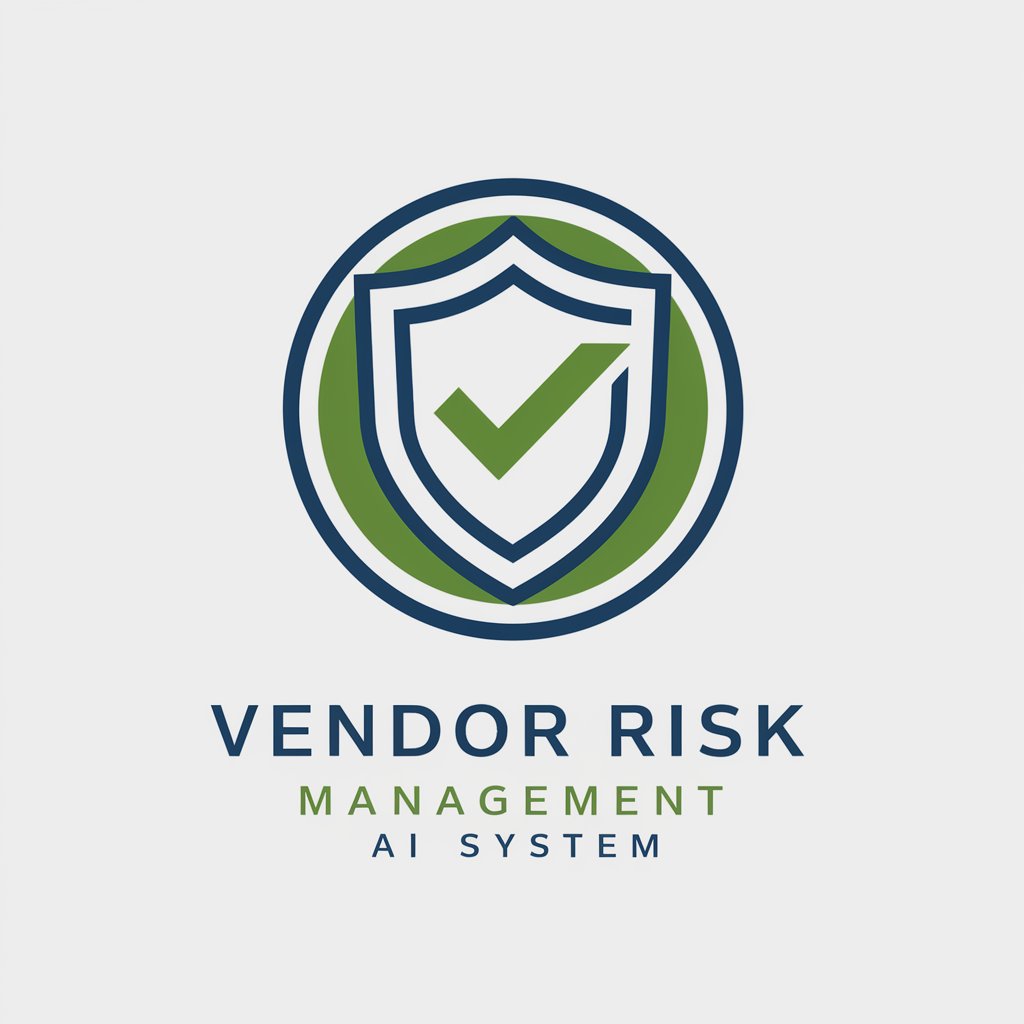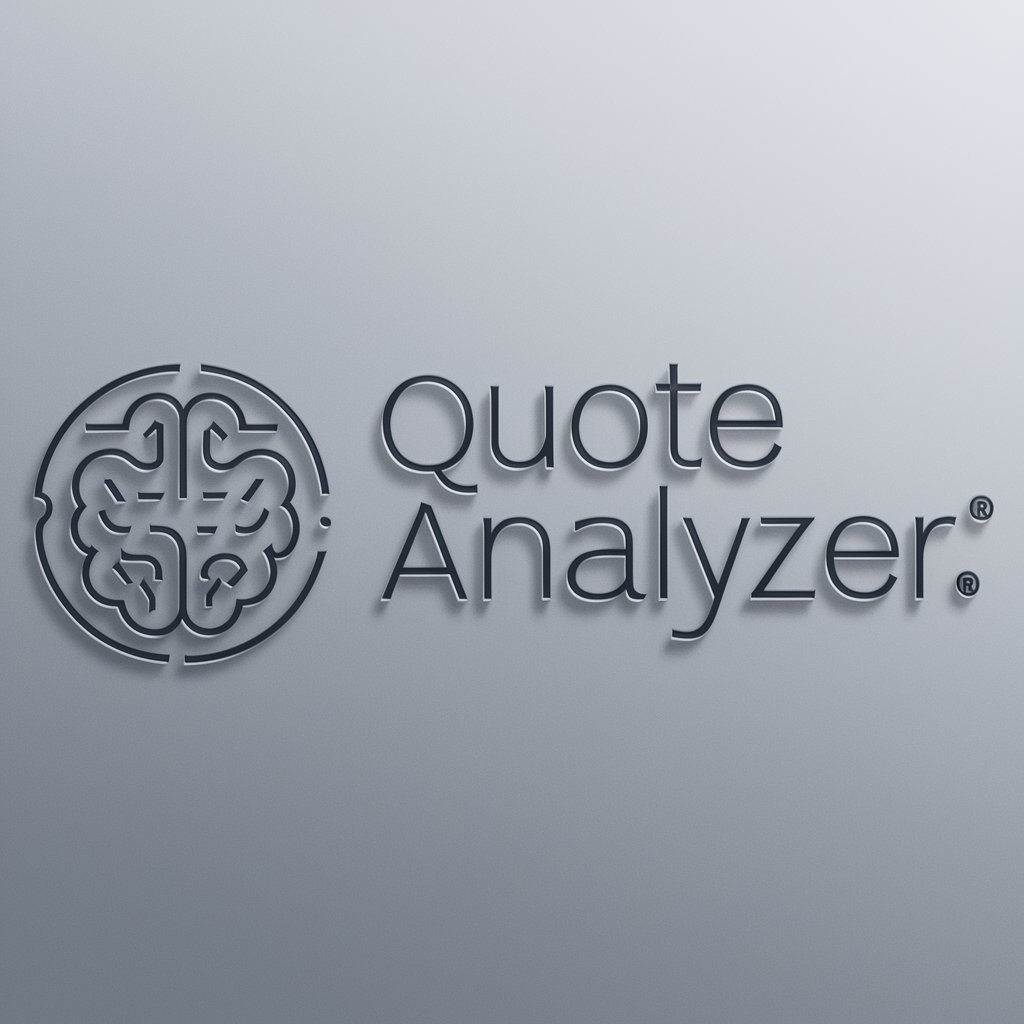
Vendor Risk Management - Vendor Risk Evaluation

Welcome to Vendor Risk Management. Let's evaluate your vendors' risks effectively.
AI-powered Vendor Risk Insights
Assess the cybersecurity risk for a vendor by analyzing their recent security audit results.
Evaluate the financial stability of a vendor by examining their latest financial statements.
Determine the data security risk for a vendor based on their data encryption practices.
Review the regulatory compliance risk for a vendor by checking their adherence to industry standards.
Get Embed Code
Introduction to Vendor Risk Management
Vendor Risk Management (VRM) is designed to systematically identify, assess, monitor, and mitigate risks associated with outsourcing products and services to third-party vendors or suppliers. This discipline is crucial in today's interconnected business ecosystems, where companies rely heavily on external entities for critical operations and services. VRM aims to ensure that vendor partnerships do not expose an organization to undue risk, particularly in areas such as financial stability, cybersecurity, data security, regulatory compliance, and privacy. For example, a company might use VRM to evaluate a new cloud service provider, assessing their cybersecurity measures and compliance with data protection laws to ensure they align with the company's risk appetite and regulatory obligations. Powered by ChatGPT-4o。

Main Functions of Vendor Risk Management
Risk Assessment
Example
Evaluating a vendor's financial stability by analyzing their credit score, financial reports, and market position.
Scenario
Before signing a contract with a software provider, a VRM system can assess the provider's financial health to predict their long-term viability and reliability.
Cybersecurity Evaluation
Example
Assessing a vendor's cybersecurity measures, including their incident response plan, encryption practices, and compliance with relevant standards.
Scenario
A healthcare organization uses VRM to ensure a data storage vendor complies with HIPAA and has robust protections against data breaches.
Regulatory Compliance Verification
Example
Checking if a vendor adheres to industry-specific regulations, such as GDPR for data privacy or SOX for financial reporting.
Scenario
A financial institution evaluates a payment processing vendor to ensure they meet PCI DSS requirements, mitigating the risk of non-compliance penalties.
Data Security Assessment
Example
Reviewing a vendor's data management and protection policies to ensure they safeguard confidential information effectively.
Scenario
An e-commerce company assesses a cloud hosting service to verify encryption of data at rest and in transit, protecting customer information.
Privacy Protection Evaluation
Example
Ensuring a vendor's practices align with privacy laws and the company's privacy policies, particularly in handling customer data.
Scenario
Before integrating a new customer relationship management (CRM) system, a business evaluates the vendor's adherence to privacy regulations like CCPA.
Ideal Users of Vendor Risk Management Services
Large Enterprises
These organizations often engage with numerous vendors globally, making them susceptible to various risks. VRM services help them manage and mitigate these risks effectively, ensuring business continuity and compliance.
Regulated Industries
Businesses in sectors like finance, healthcare, and energy must adhere to strict regulatory standards. VRM helps these organizations ensure their vendors are compliant, reducing the risk of legal penalties and reputational damage.
Technology Companies
Given their reliance on third-party software, infrastructure, and platforms, tech companies benefit greatly from VRM services to secure their operations and protect intellectual property.
Small and Medium-sized Enterprises (SMEs)
SMEs, while having fewer resources, face significant risks from vendors that can impact their operations. VRM services offer a scalable way to manage these risks, aligning with their growth and risk management capabilities.

How to Use Vendor Risk Management
Initiate Free Trial
Start by accessing a free trial at yeschat.ai, no signup or ChatGPT Plus required, to explore Vendor Risk Management capabilities.
Identify Vendors
List all vendors your organization currently works with or is considering. This includes suppliers, service providers, and any third parties.
Assess Risks
Utilize the tool to evaluate each vendor against five key risk categories: Financial Stability, Cybersecurity, Data Security, Regulatory Compliance, and Privacy.
Review Risk Matrix
Analyze the generated risk matrix to understand the vendor's risk profile across different areas, identifying both strengths and vulnerabilities.
Make Informed Decisions
Use the comprehensive risk assessment to guide your vendor management decisions, ensuring a balance between benefits and potential risks.
Try other advanced and practical GPTs
V6 Prompt Maker
Crafting Realism with AI Precision

SEO文章執筆_S
Elevate your SEO game with AI-driven Japanese content

BCI Student Success Bot
AI-Powered Academic Guidance

Jose Paulo AI
Empowering insights at your fingertips.

Market Mentor
Empowering Your Investments with AI

Time Tracker
Harness time, boost productivity with AI

Quote Analyzer
Unraveling Quotes with AI-Powered Precision

Washer
Expert Advice on Laundry and Machines

SEO Competitor Finder
Unveil Competitors' Secrets with AI

Seaweed Expert by SoftSeaweed
Empowering Seaweed Cultivation with AI

Enólogo Sommelier
Elevating Wine Experiences with AI

视频开头文案生成器
Craft Captivating Video Openings with AI

Vendor Risk Management FAQs
What is Vendor Risk Management?
Vendor Risk Management is an AI-powered tool designed to assess and mitigate the risks associated with third-party vendors across multiple dimensions, including financial, cybersecurity, data security, regulatory compliance, and privacy.
How does the risk matrix work?
The risk matrix visually maps out each vendor's risk levels across the five assessment categories. It uses color codes (green for low, yellow for medium, and red for high risk) to highlight areas of concern and strengths.
Can Vendor Risk Management help with compliance?
Yes, it assesses vendors for regulatory compliance risks, helping organizations ensure that their third-party relationships adhere to relevant laws and standards.
How often should I reassess vendor risks?
Reassessment frequency depends on several factors, including the criticality of the vendor, changes in the vendor's operations, or shifts in the regulatory landscape. A general best practice is at least annually or after significant events.
Does Vendor Risk Management support multiple industries?
Yes, its versatile framework and comprehensive risk categories make it suitable for a wide range of industries, from finance and healthcare to technology and manufacturing.